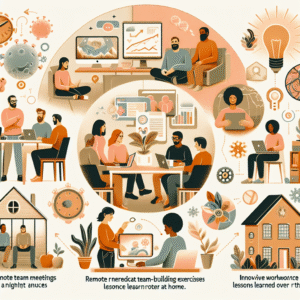Sustainable Business Practices: Building Profit and Purpose in 2025

Sustainable Business Practices: Building Profit and Purpose in 2025
In 2025, the business world is at a critical intersection of profit and purpose. As ecological challenges intensify and consumer expectations evolve, sustainability is no longer just a buzzword—it’s an imperative for long-term viability. Companies that integrate sustainable business practices are not only helping safeguard our future but are also unlocking new avenues for growth, innovation, and competitive advantage. Here’s how your business can thrive by making sustainability central to its strategy.
Why Sustainability Matters Now More Than Ever
Environmental concerns are at an all-time high. Regulatory pressures are mounting worldwide, while employees and consumers favor companies that act on climate and social issues. In fact, recent studies reveal that nearly 80% of global consumers prefer pursuing brands aligned with their values. Investors increasingly apply ESG (Environmental, Social, and Governance) filters to investment decisions, rewarding companies that demonstrate responsible practices.
Businesses that fail to adapt risk falling behind, losing market share, and facing reputational damage. Embracing sustainability is no longer optional—it’s fundamental to building resilience, brand loyalty, and profitability.
Core Principles of Sustainable Business
- Resource Efficiency: Optimizing energy, water, and material use throughout the supply chain minimizes waste and costs.
- Minimizing Carbon Footprint: Reducing emissions through renewable energy, eco-friendly logistics, and efficient processes is both environmentally responsible and good for the bottom line.
- Sustainable Innovation: Designing products and services that address real-world challenges creates differentiation and opens new markets.
- Circular Economy: Moving from linear “take-make-dispose” models to circular systems, where waste is minimized, and resources are reused or recycled whenever possible.
- Responsible Sourcing: Ensuring that raw materials and partnerships reflect social and environmental standards, minimizing negative impacts.
- Stakeholder Engagement: Involving employees, customers, suppliers, and local communities in decision-making leads to shared value creation and broader support.
Driving Profit Through Sustainability
Contrary to outdated beliefs, sustainable business practices are not a cost burden—they are powerful drivers of profit. Let’s look at how:
- Operational Savings: Efficiency measures—such as energy conservation, reduced packaging, and waste recycling—cut costs and improve margins.
- Brand Value: Aligning with stakeholder values strengthens customer trust, encourages loyalty, and enhances brand reputation—key drivers of revenue growth.
- Market Expansion: Companies committed to sustainability are better positioned to enter new markets and meet evolving regulatory requirements.
- Risk Mitigation: Proactively addressing environmental and social risks keeps disruptions and liabilities at bay.
- Talent Attraction and Retention: Purpose-driven organizations attract motivated employees who are more engaged and creative.
Key Steps to Embed Sustainability in Your Business Model
-
Set Clear, Ambitious Goals:
Define sustainability objectives aligned with global standards, such as the United Nations’ Sustainable Development Goals (SDGs). Make them measurable and time-bound to track progress and inspire accountability.
-
Assess Impact and Opportunities:
Conduct lifecycle assessments of your products and processes. Identify areas for improvement and innovation across operations, supply chain, and customer engagement.
-
Engage and Educate:
Empower employees, partners, and customers by sharing your sustainability mission. Provide training and resources to embed responsible practices at every level.
-
Invest in Innovation:
Dedicate resources to R&D for sustainable products and services. Look for partnerships—such as with cleantech startups or NGOs—that can accelerate your efforts.
-
Transparency and Reporting:
Share your journey openly through sustainability reports and digital dashboards. Honest communication builds trust and demonstrates commitment.
-
Continuous Improvement:
Sustainability is an ongoing journey. Regularly review your metrics, celebrate victories, and adjust strategies as new challenges and opportunities arise.
Looking Ahead: The Business Case for Purpose
Purpose-driven businesses outperform their peers both financially and socially. By balancing profit with planet and people, you ensure your business remains relevant and resilient in a rapidly changing world.
In 2025 and beyond, leaders who champion sustainable practices will not only meet the demands of customers, investors, and regulators—they will also help chart a course to a more equitable and prosperous future for everyone.
Now is the time to adapt, innovate, and commit. Sustainability isn’t just about doing what’s right; it’s about building success that lasts.
* The post is written by AI and may contain inaccuracies.


